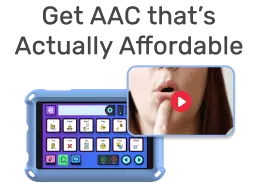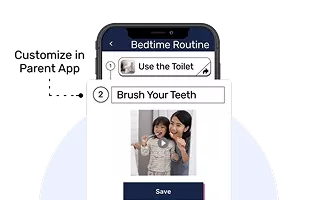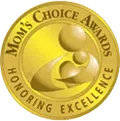An early autism signs checklist is a helpful tool for parents and caregivers to identify potential signs of autism in young children. Early detection is key to getting the right support and interventions, which can make a significant difference in a child’s development. This checklist highlights common behaviors and traits to watch for, making it easier to spot early signs and take the next steps toward a diagnosis and support.
Table of Contents
What is Autism?
Autism Spectrum Disorder (ASD) is a developmental condition that affects how a child communicates, behaves, and interacts with others. Signs can emerge as early as 18 months and vary greatly from child to child.
Some kids might show signs like avoiding eye contact, while others may exhibit repetitive behaviors such as hand flapping or rocking. Understanding these signs early is essential because it allows parents to take action and access helpful resources, including early interventions that can make a huge difference.
Read more: Autism Behavior Checklist
Key Early Signs of Autism
Recognizing the signs of autism early on can help parents find the best way to support their kids. These signs can often be subtle, so it’s helpful to know what to watch for:
- Speech Delays: Many kids with autism experience delayed speech or unusual speech patterns. They may not babble by 12 months or may use very few words by age 2.
- Lack of Eye Contact: Children with autism often avoid eye contact, making social interactions feel disconnected. This is one of the most commonly noticed early signs.
- Repetitive Behaviors: You may notice your child repeating certain movements, like hand flapping or rocking back and forth. These repetitive behaviors are often comforting for neurodivergent kids.
- Limited Social Interaction: Difficulty in engaging with peers or family members, such as playing with others or showing interest in social games, can be a sign.
- Sensitivity to Sensory Input: Some kids may react strongly to loud noises, bright lights, or certain textures, showing signs of sensory overload.
Early recognition of these autism signs empowers parents to seek timely interventions that can significantly benefit their child’s development.
Free Early Autism Signs Checklist
Download our free, easy-to-use checklist designed to help you track early autism signs in your child. This tool provides a simple way to observe key developmental milestones and take proactive steps to support your child’s growth and well-being.
How to Use the Early Autism Signs Checklist
Our free downloadable checklist is a tool that parents can use to track early signs of autism in their kids. It’s designed to help you observe key developmental milestones and note any behaviors that might be concerning.
Here’s how to use the checklist effectively:
- Observe Over Time: Autism signs can appear gradually, so make observations at regular intervals. Use the checklist to track these behaviors across different situations—playtime, meal times, and interactions with others.
- Note Developmental Milestones: Compare your child’s progress to expected milestones. Speech, motor skills, and social interactions are important areas to keep an eye on.
- Identify Repetitive Behaviors: Note any repetitive actions, such as hand flapping or spinning, and their frequency. Include sensory sensitivities, such as reactions to sounds or textures.
- Share with Professionals: Use the checklist to communicate your observations with a pediatrician or specialist. This document can guide your conversations about any concerns you may have.
Using the checklist consistently will help you stay on top of any developmental concerns.
Why Identifying Early Signs Is Important
Early identification of autism can lead to earlier interventions, which are known to improve developmental outcomes. By tracking and addressing these signs early, parents can help their kids build important skills, such as communication and socialization, in a supportive environment. The earlier you recognize these signs, the more opportunities you’ll have to access resources, like speech therapy or occupational therapy, that can make a positive difference.
Read more: Autism Diagnosis Checklist for Kids
Practical Tips for Parents
I understand how overwhelming it can feel to notice these early signs in your child. Here are some practical steps you can take:
- Keep a Journal: In addition to using our checklist, writing down your child’s daily behaviors, routines, and any concerns you have can be incredibly helpful.
- Seek Support: Talk to other parents, join support groups, and stay informed about autism. Many families find it beneficial to connect with others who understand what they are going through.
- Take One Step at a Time: Focusing on small, actionable steps like using the checklist and scheduling a professional evaluation can make a big difference without overwhelming you.
By taking these steps, you’ll be better equipped to support your child’s development and connect with the right resources. Remember, you are not alone in this journey, and the right support can make all the difference.
When to Consult a Professional
If you’re noticing multiple signs from the checklist, it might be time to consult a pediatrician or developmental specialist. Trust your instincts—if you feel something isn’t quite right, it’s always better to seek advice early on. Professionals can guide you through next steps, including formal assessments and access to therapy services.

Goally | Best Videos to Teach Life Skills
Give your kid an independent future. Goally has 100+ video classes teaching life skills like “How to Choose a Restaurant,” “How to Interrupt Politely,” and “How to Get Ready for School.”
Goally takes kids on an adventure that includes interactive practice and checkpoints along the way! No web browsers, YouTube, or social media.
Identifying the early signs of autism can feel daunting, but with tools like our printable checklist, you’ll be equipped to observe, track, and take action. Remember, early intervention can make a huge difference in your child’s life, helping them thrive. Download the checklist, keep an eye on those signs, and don’t hesitate to reach out to professionals when needed.
Resources:
FAQs about Early Autism Signs Checklist
What are the early signs of autism in kids?
Early signs of autism include speech delays, avoiding eye contact, and repetitive behaviors.
How can I track early autism signs in my child?
You can download and use a free early autism signs checklist to track your child's behaviors over time.
What age should I start looking for early autism signs?
Parents can start observing signs of autism as early as 18 months.
Is a checklist for early autism signs useful?
Yes, a checklist helps parents track signs like speech delays and social interactions, making it easier to discuss concerns with professionals.
Can I download a free checklist to track early autism signs?
Yes, you can download a free printable checklist designed to help you track early autism signs.

Hennah is an experienced writer and researcher, helping children with autism, ADHD, and other neurodivergent conditions. As a blog contributor for Goally, she combines her deep understanding of neurodiversity with practical advice, offering valuable insights to parents and educators.





